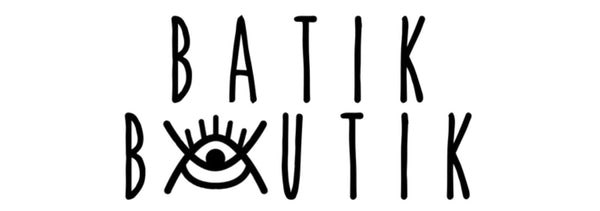Afrohornism: Making Cow Horns into Masterpieces
Share
Enoch Nii Hammond is a visual artist from Accra, Ghana. Titled Afrohornism, Enoch works with cow horns to create striking installations, questioning material culture, disposability and continental issues. The artist expertly cuts horns in to pieces to create visual masterpieces of various scale. Themes in some of his work span from labor to migration and environmental issues in Africa.
I was able to discover his work and speak with him at Chale Wote festival in 2023. His exhibit centred around the role of the cow horn during slave trade rebellions and how it was an essential tool of communication.
Assembled and woven with fishing line, the artist considers the various stories and histories behind each piece and each cow.

Interview with Enoch Nii Hammond
Maya: So let's start from the beginning. How long have you been an artist for?
Enoch: I started working full time on my art in 2015.
Maya: How did your life and your career pivot in that way?
Enoch: Actually, when I was a kid, I was interested in art. I usually drew from magazines, storybooks and stuff. So, through that, I developed a passion for art. After, um, junior high school, then I continued. I did art in secondary school. After secondary school, then I started working with the cow horns.

Maya: Can you describe that initial part of the journey when you first came across this medium? Why cow horns?
Enoch: I used to think of it as a waste material, but when I came across the horns and I saw the aesthetics and things I could make out of the cow horn I realized this is a valuable material which I can transform into something.
Maya: So, where were you finding these cow horns?
Enoch: From the slaughterhouses, the local slaughterhouses, where they slaughter the cows and stuff.
Maya: So they weren't using them for anything?
Enoch: Usually, after they slaughter the cow, they remove the cow and they dump the cow horns. Sometimes it starts to rot and also they burn it. Because usually people don't come for it, they burn it. So we negotiate with the butchers and they gather it for us and then we buy it from them.


Maya: And at the time, were you the only one using cow horns in your work? Or is it a common thing for artists in Ghana to use cow horns?
Enoch: A few people are using cow horns in their work, actually. So, I was trained in to this craft. So after school, I was introduced to this man, Mr. Bennett McCanson, my master who taught me how to use it in my work, to make accessories, finger rings, necklaces and other stuff. So when I started working, I realized, you know, it’s something I can do more, I can do art differently and it not necessarily had to be just finger rings.
So I started creating. I started cutting it into pieces to create figures. It’s to tell a story about we, the Africans. People have different perspectives about the material and they won't consider it as art but rather as discarded material. But I'd rather appreciate it and keep it from environmental degradation. Transforming into something valuable.

Maya: So at what point in the journey did you start making it more like visual pieces like this?
Enoch: I started making visual pieces like this in 2021. I also make stone crafts and accessories, body accessories like finger rings. I cut them, cut these pieces and I take it home. I start to create figures out of it.
Maya: And how do you cut them? What do you use?
Enoch: I use a jig saw, grinding machine, and drill press to do the holes and cutting. So after cutting then I shape to get my pieces like this.
Maya: So is it a very physical process?
Enoch: Yeah, it involves a lot of physical labor.
Maya: And around how long does it take you to complete one?
Enoch: To complete a work, it depends on the size of work I want to do and the type of work I'm working on. Usually, when I'm working on a piece, I'm also doing another piece.
Last march, Enoch presented his first solo exhibition at the Gallery Soview in Accra, titled “Resurgence”. You can find more of his work on his Instagram
